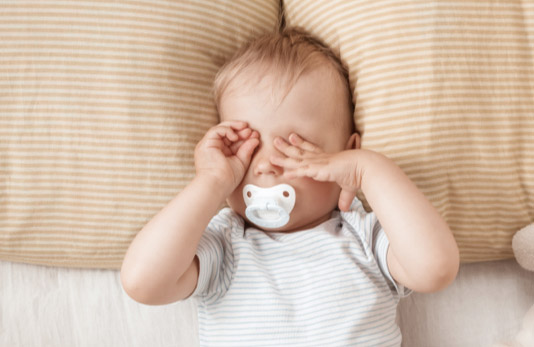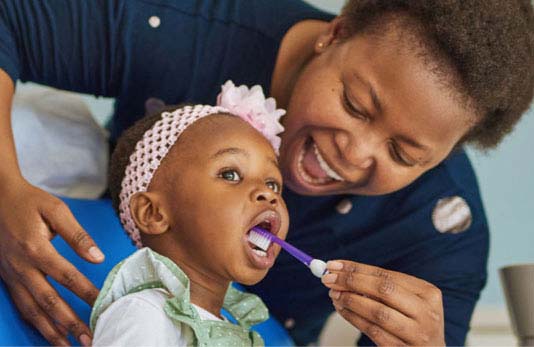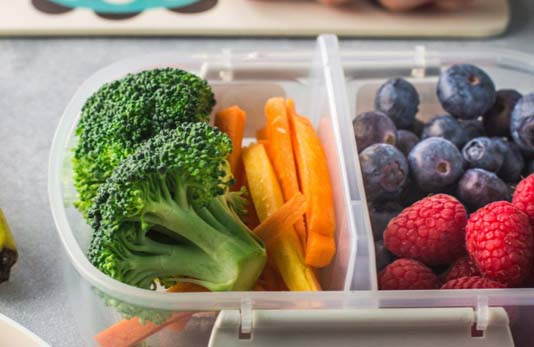What do you do when your child has a loose baby tooth?

One of the biggest rites of passage for children is starting to lose their baby teeth. However, amid all the excitement of growing up, there are some important things parents should keep in mind.
When will my child start to lose his baby teeth?
Children start losing their first set of teeth around age 6 or 7; however, your child may be younger or older when it first happens. Make sure your child continues to see his or her dentist regularly to avoid missing any signs of infection or other problems that could delay baby teeth coming loose.
Typically, the first teeth to fall out are the ones that came in first, so the lower front teeth and then the upper front teeth will become loose first. A baby tooth usually doesn’t loosen until the permanent tooth under it has started to push the baby tooth out of the socket. After it starts to loosen, the tooth can take up to a few weeks to fall out. As long as you don’t see any redness or swelling around the gums of the tooth, it’s best to let the tooth fall out on its own.
What if my child’s tooth is loose from an injury, like falling?
If this happens, take your child to the dentist as soon as possible to check the stability of the baby tooth, as well as to ensure there’s no infection or damage to the permanent tooth underneath.
If your child has a tooth that becomes loose “out of order” (a back tooth loosening before any front teeth have come out), or it seems too early for your child to be losing a tooth, play it safe by taking your child to the dentist. A quick exam can determine whether there’s any reason to worry.
Can we pull the tooth out? Will a loose tooth hurt my child?
The best thing to do with a loose tooth is to let nature take its course and wait for it to fall out on its own. It can be wiggled (we all did it as kids, remember?), but generally, it shouldn’t be pulled out because this can lead to infection.
Let your child know that when the tooth comes out, there might be a little tingling and some bleeding (this will vary from child to child). Reassure your child that everything is OK and any pain or blood should cease quickly. Make sure your child rinses with water. If your child complains of pain, moisten a washcloth with cold water and gently apply pressure to the area where the tooth fell out. This will also help stop the bleeding. If the pain continues, use an over-the-counter anesthetic, called an oral analgesic. If the pain and bleeding don’t stop after about an hour, talk to your child’s dentist.
My child swallowed a loose tooth. Will that make her sick?
Nope. A loose tooth will pass through the body like everything else.
When will the permanent teeth come in?
Permanent teeth should start showing within a few weeks, but they won’t fully grow in for a few more months. If you see that a new tooth is growing in discolored or crooked, talk to your child’s dentist.
What’s the most important thing about losing a tooth?
Losing a tooth is a big deal for your child — make sure it’s a good memory! Check out these cool Tooth Fairy perks on our website that you can download to use at home:
Lost tooth certificate from the Tooth Fairy (1.3MB)
First tooth letter from the Tooth Fairy (700KB)
Baby tooth traditions around the world (a fun way to learn about children in other countries) (1.2MB)
My Very Loose Tooth (a book about Kayla, who is ready to lose her first tooth) (29.7MB)
Last updated February 3, 2022
Related articles:
The oral health information on this website is intended for educational purposes only. Always consult a licensed dentist or other qualified health care professional for any questions concerning your oral health.


